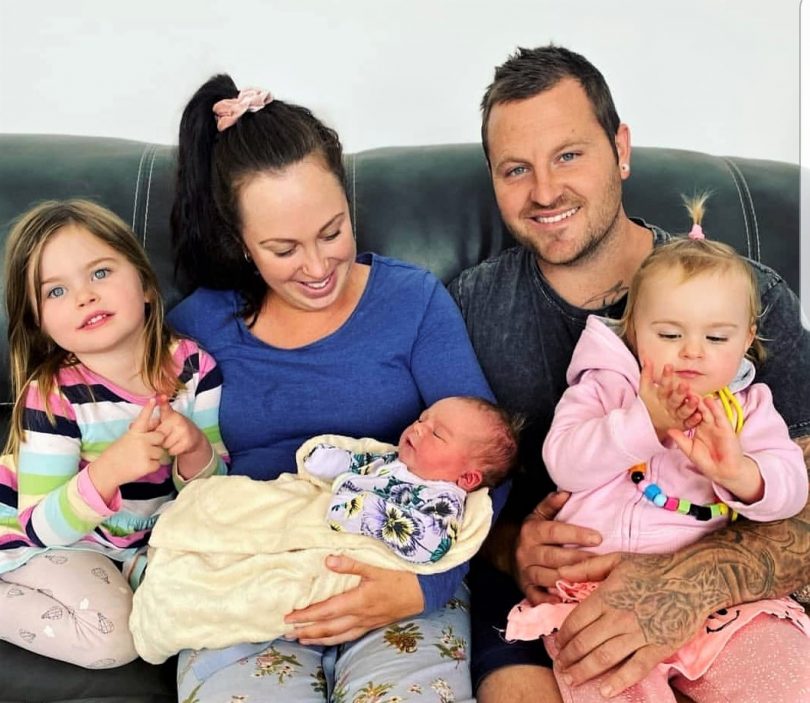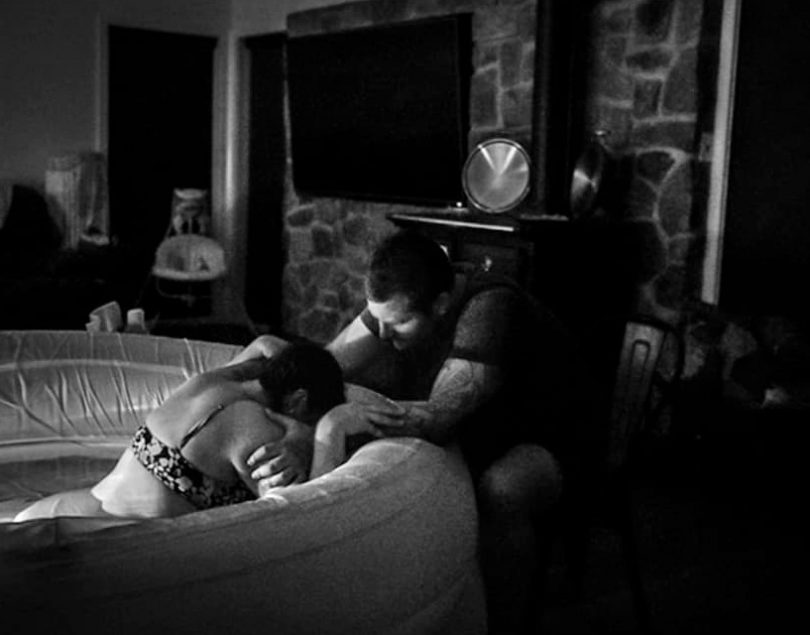
Steph and Tim Dummett with their three children, including new baby Inti, who was born at home in Quaama two weeks ago. Photo: Supplied.
Women all over Australia have been asking for homebirth for decades, but have largely been hindered because of the difficulty and high cost for private midwives to purchase indemnity insurance.
Homebirths account for less than 1 per cent of all births across the country, although that number is on the rise as cities have begun to roll out publicly funded homebirth programs, including a successful two-year trial that the ACT Government made permanent earlier this year.
Google reports that searches for homebirth have increased since the COVID-19 pandemic began, as women weigh up the benefits of birthing in hospital with the risks of being around more people and possibly contracting or passing on the virus.
Steph Dummett is a mum of three and gave birth to her third baby, Inti, at home in Quaama, in the Bega Valley, two weeks ago, attended by registered midwives from The Nest in Moruya.
She says the constantly changing nature of the COVID-19 pandemic and restrictions meant it was hard to plan for her birth, and she was concerned about not being able to have support people in the room and being tended to by people who were in full personal protective equipment.
“I’d already had two babies in the hospital so I knew what I was in for, but the thought that it was likely to be more medical because of the virus and looking at the ever-changing policies, I just thought: how do you prepare mentally to birth in those circumstances?”
Steph says she toyed with the idea of homebirth for her first baby but was put off by the cost and husband Tim’s reluctance.
“Let’s just say it was the pandemic that got hubby across the line,” she laughs.
According to Steph, Tim isn’t only across the line, he can’t stop raving about homebirth, posting on social media after Inti’s birth.
“It took Steph a bit to convince me that homebirth was the best option for us, but I’m so grateful she did because it was a truly amazing experience,” he wrote.
While medical professionals say hospital is the safest place to give birth, even during the COVID-19 pandemic, Steph and Tim believe that lack of education about homebirth is a big reason why they didn’t have one earlier, and why so many people don’t.
“One of the biggest things we spoke about a lot after the birth is that people don’t know you can have trained medical professionals at a homebirth,” says Steph.
“We wouldn’t have done it otherwise. It was a very thought-out decision to have a homebirth and I think it’s the same for the majority of homebirths. It’s not like any mum would knowingly place herself or her baby in harm’s way.”
Steph and Tim are grateful to the midwives from The Nest for giving them the chance to birth at home in front of the new stone wall and fireplace that Tim rushed to get built before the baby came.

Steph and Tim Dummett birthing at home. Photo: The Nest Moruya.
“If it wasn’t for them, we wouldn’t have been able to do it,” says Steph. “So many women miss out on homebirth because no-one is available to attend.
“Our private midwives made the whole experience more personal and comfortable, especially amid the current COVID-19 situation and the protocols of hospitals at this time,” adds Tim.
The birth was also Steph’s best in terms of physical outcomes, which she puts down to being in water.
“I previously had two natural births in hospital and tore quite badly with both,” she says. “With Inti, she was my biggest baby and was born with her hand up near her head yet I hardly tore at all.”
As well as the physical outcomes of the birth, Steph says seeing Tim change his mind was the best part of having a homebirth.
“He now says he was just uneducated about homebirth,” she says. “He loved it. He felt very involved and it was amazing watching the big flip as he transformed into the biggest homebirth advocate.”
For more information about birthing during COVID-19 restrictions, visit NSW Health.







